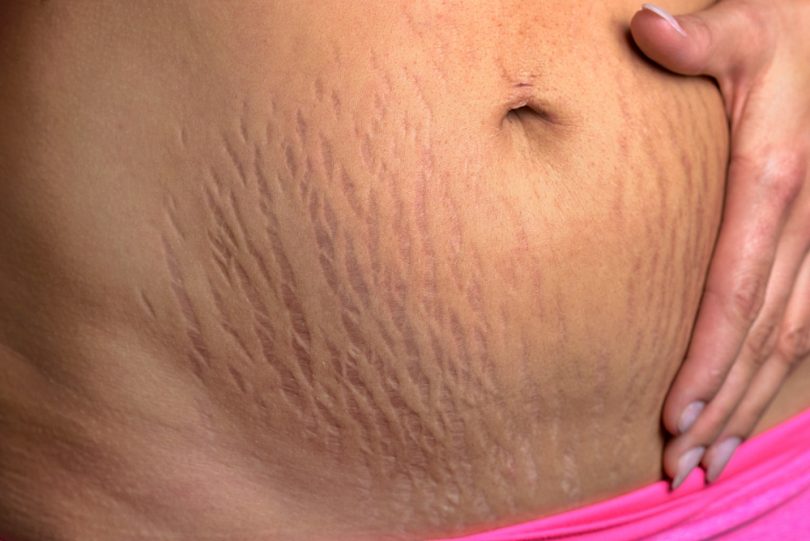

Stretch marks are caused when the skin rapidly stretches as a result of sudden growth or weight gain. They'll usually become less noticeable over time, although this process can sometimes take years. To start with, the lines will be slightly raised and may feel wrinkly, before eventually flattening out.Īs the lines become flatter, they'll start to fade and change to a white or silvery colour. They can occur in patches of parallel lines on your body and often appear "scar-like". The stretch marks themselves appear as red or purple streaks or lines, but can be pink, reddish-brown or dark brown, depending on your skin colour. How stretch marks developīefore stretch marks appear, the affected skin will become thin, flattened and pink, and may feel itchy. Ask your doctor or pharmacist for advice if you're unsure. The face, groin and armpits are particularly sensitive areas. When using a corticosteroid cream or lotion, follow the manufacturer's instructions about how and where to apply it. The less collagen there is in your skin, the more likely you are to develop stretch marks.

They can help ease inflammatory skin conditions but, like cortisol, they can also reduce the amount of collagen in your skin.Ĭollagen is a protein that helps keep your skin stretchy. Stretch marks can sometimes be related to rare conditions or syndromes, such asĬorticosteroids work in a similar way to the hormone cortisol. If you have a close relative with stretch marks, such as your mother, you're more likely to develop them yourself.Īlthough stretch marks can affect both male and female family members, they're more common in women. Pubertyĭuring puberty, the body often develops very quickly in growth spurts.īoys may get stretch marks on their shoulders and back, and girls may get them on their hips, thighs and breasts.
#THIGH STRETCH MARKS HOW TO#
Read more about how to lose weight safely.īodybuilders and athletes can also get stretch marks as their muscles increase in size. If you need to lose weight, lose it slowly and steadily so that your skin isn't put under strain. Regular dieting can cause stretch marks as your weight goes up and down. They sometimes remain even after losing weight, but should eventually fade. You may get stretch marks if you put on a lot of weight over a short period of time. Stretch marks usually fade and become less noticeable after childbirth, but they don't always disappear completely. You may also develop them on your thighs and breasts as they get bigger. However, the hormones also soften the fibres in your skin, making it prone to stretch marks.Īs your baby grows and your skin stretches, you may get stretch marks on your tummy.

Ligaments are strong bands of tissue that connect joints. Whether or not you'll get stretch marks depends on your skin type and how elastic it is.ĭuring pregnancy, hormones are produced that soften the ligaments in your pelvis so they're more flexible when you give birth. Stretch marks often occur during the later stages of pregnancy, affecting about eight out of 10 pregnant women. These are discussed in more detail below.


 0 kommentar(er)
0 kommentar(er)
